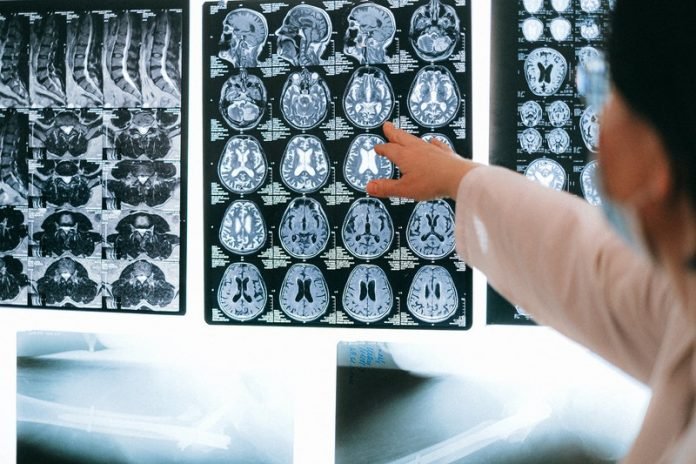
In a new study from Columbia University, researchers found that the COVID-19 virus likely does not directly infect the brain but can still inflict significant neurological damage.
They found many pathological changes in these brains, which could explain why severely ill patients experience confusion and delirium and other serious neurological effects—and why those with mild cases may experience ‘brain fog’ for weeks and months.
The finding suggests that the neurological changes often seen in these patients may result from inflammation triggered by the virus in other parts of the body or in the brain’s blood vessels.
In the study, the team examined the brains of 41 patients with COVID-19 who succumbed to the disease during their hospitalization.
The patients ranged in age from 38 to 97; about half had been intubated and all had lung damage caused by the virus.
Despite their intensive search, the researchers found no evidence of the virus in the patients’ brain cells.
Though they did detect very low levels of viral RNA by RT-PCR, this was likely due to virus in blood vessels or leptomeninges covering the brain.
The tests were conducted on more than two dozen brain regions, including the olfactory bulb, which was searched because some reports have speculated that the coronavirus can travel from the nasal cavity into the brain via the olfactory nerve.
Despite the absence of virus in the brain, in every patient, the researchers found strong brain pathology, which mostly fell into two categories.
Some of these were large areas caused by strokes, but most were very small and only detectable with a microscope.
Based on other features, the researchers believe these small areas of hypoxic damage were caused by blood clots, common in patients with severe COVID-19, that temporarily stopped the supply of oxygen to that area.
A more surprising finding was a large number of activated microglia they found in the brains of most patients. Microglia are immune cells that reside in the brain and can be activated by pathogens.
The activated microglia were found predominantly in the lower brain stem, which regulates heart and breathing rhythms, as well as levels of consciousness, and in the hippocampus, which is involved in memory and mood.
The team says that more research is needed to understand the reasons why some post-COVID-19 patients continue to experience symptoms.
If you care about COVID-19, please read studies about this problem in COVID-19 pandemic linked to high blood pressure and findings of this drug may reduce death risk in people with type 2 diabetes and COVID-19.
For more information about COVID-19 and your health, please see recent studies about the cause of COVID-19 lung damage and results showing that this sleep problem may be risk factor for COVID-19.
The study is published in Brain. One author of the study is James E. Goldman, MD, Ph.D.
Copyright © 2021 Knowridge Science Report. All rights reserved.



